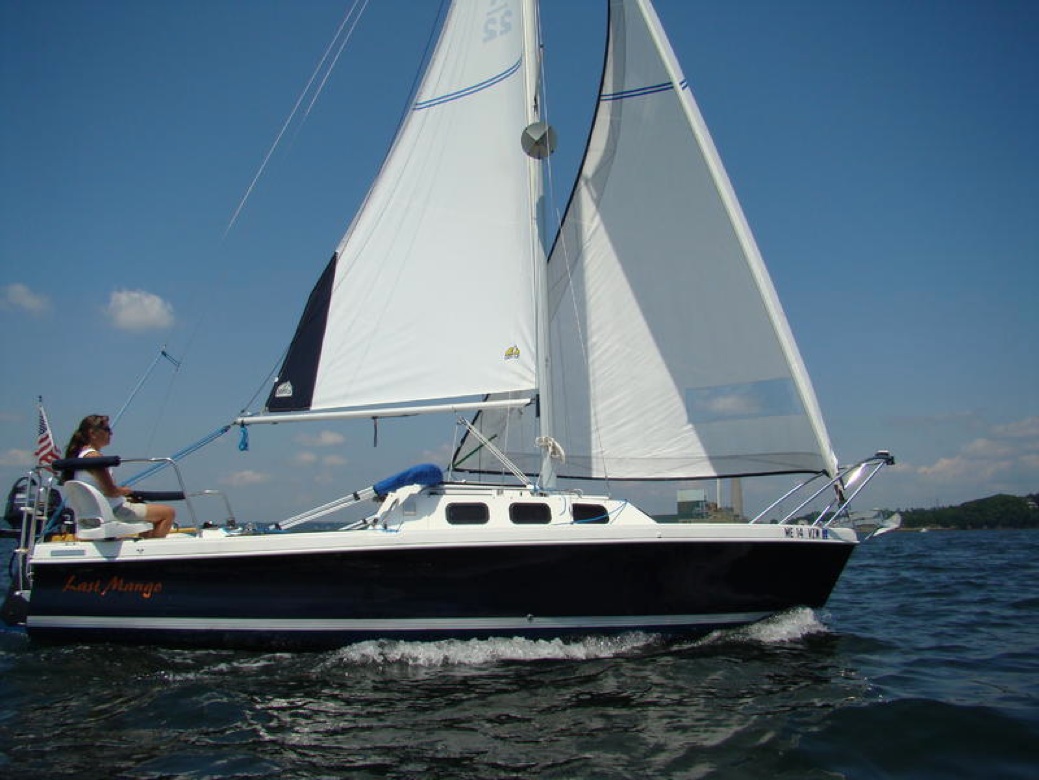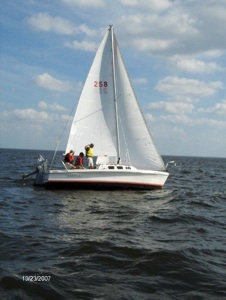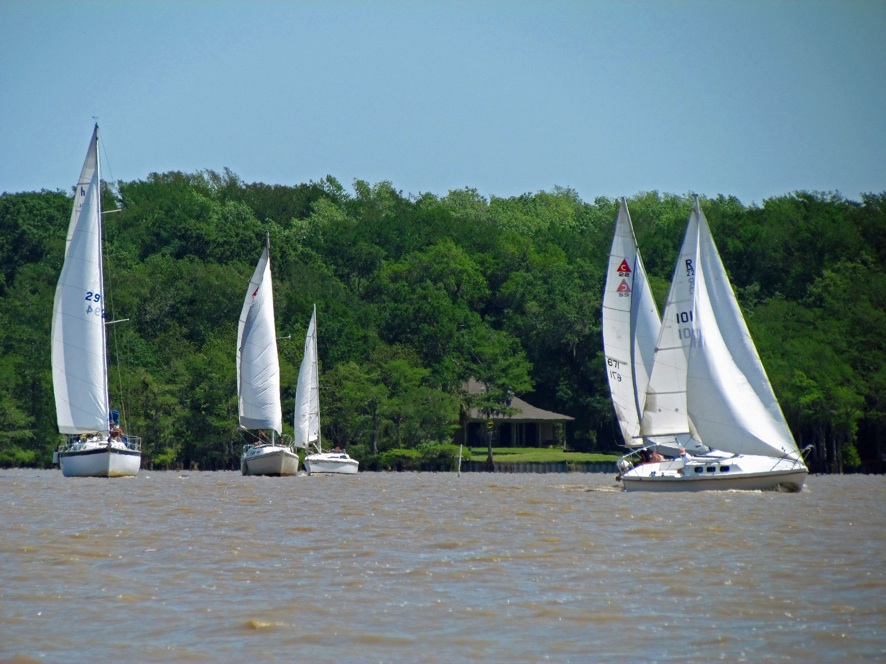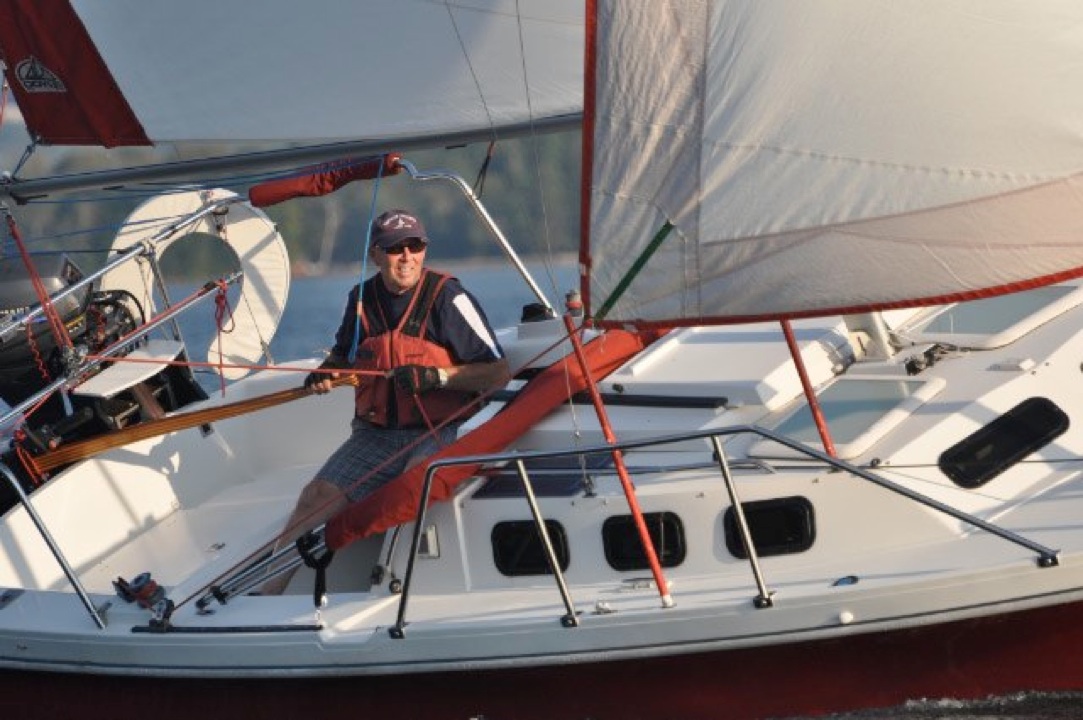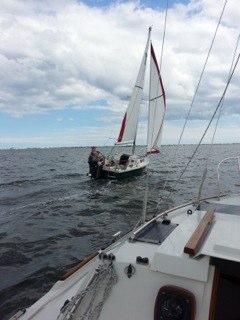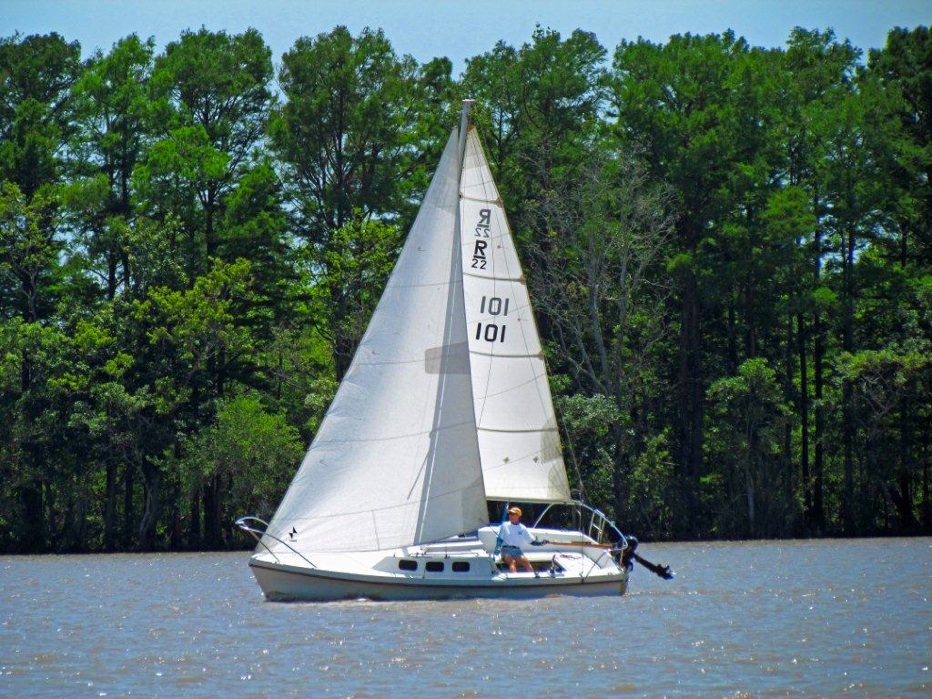they say that whenever you see two sailboats, there is a race - even if one of them does not know it. and it can be fun.
Obviously, with its heavy construction and collective creature comforts, the cruising Rhodes is not a pure racing machine. Not so obvious is that the 22s fine entry and low wetted hull shape follow the lines of the Rhodes 19 so the 22 has an inherently good turn of speed. For those younger at heart than the company owners, willing to forego some of the built in lazy sailor conveniences and add some of the racing fans come fly with me gear, this is a fast trailerable that is even faster - if you go for the RCR (Rhodes Club Racer) version.
Early Rhodes, like the new RCRs, were lighter built than the new cruising 22s, so, like the RCRs, are faster, as owner Lou tells owner Lee:
“I have an ’83 with conventional main and have managed
(with help from an experienced racer) to get 1st and 2nd
place in two separate regattas. Also, I have been out in
very strong winds using just a little bit of jib and have
reached 7 knots. Afterwards, my crew had wet pants and
it was not from the water”.
Misc: Running before the wind I can get 1/2 kt. increase by retracting the board -confirmed by GPS.”

